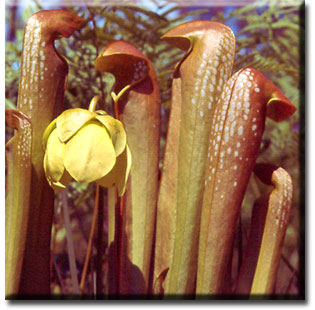Sarracenia minorCarnivorous Plants / Insectivorous Plants
Sarracenia minor grows in boggy areas in openings among pine trees in North Carolina, South Carolina, Georgia, and Florida.
Sarracenia minor is known as the hooded pitcher plant. Each pitcher leaf end in a re-curved hood, which serves very effectively as a way to trap insects. The bright reddish to purplish colors are an attractive signal. The inside of the hood has nectar glands in it, so the leaf is offering some food for the insect. Notice the pattern of white translucent areas in the leaf..... The translucent areas in the hood fool an insect, which responds to the light these "windows" (seen enlarged here) transmit. The insect's response is to fly toward the windowed wall, because it resembles sky by being bright. The hairs on the inside of the hood of Sarracenia minor may look small, but they are large compared to an insect. They point downward, into the pitcher, and tend to discourage returning upward...
The pitchers of Sarracenia minor are long and very narrow, so that the further down in a pitcher an insect progresses, the less likely it is that it can accurately fly up and out of the narrow tube. Here's a view of some remains of insects that were unable to fly back up and out. The pitcher leaf digests the soft parts of insects, but the hard parts remain. The flowers of Sarracenia minor point downwards. The petals are yellow and round in shape, and those features can be used to identify this species, although the hooded shape of the pitchers makes it different from other kinds of pitcher plants also. Here's a flower of Sarracenia minor cut from the plant and turned so that you can see the center of the flower. Notice that the leaves of this plant are dark red. Plants from different localities have leaves somewhat different in their colors and patterns. A flower cut open to show its parts. An insect to enter has to crawl through the narrow space between the yellow petal and the white umbrella-like stigma. The orange structures are anthers, which contain pollen, probably used as food by insects. A picture of some seeds of Sarracenia minor. The dry fruit (capsule) has cracked open and is about to release the seeds, which are about 3 mm long. The outside of the capsule is very rough, appearing like peaks and valleys. Do these contours help open the capsule as it dries? Nobody knows yet. The seeds have rough, knobby surfaces. Why they have such surfaces hasn't been studied yet, but there probably are reasons for it. 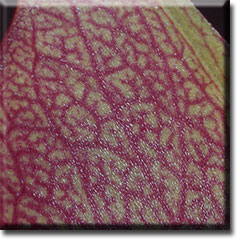  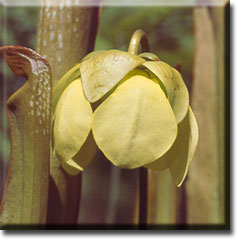 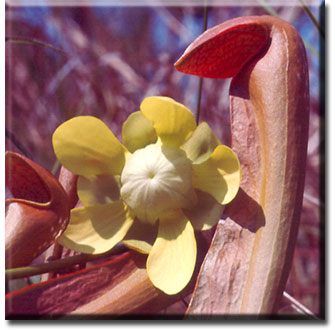 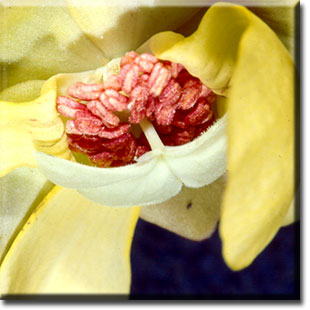 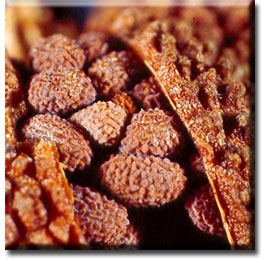 |

